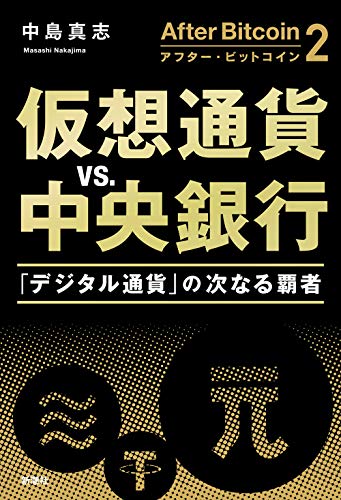2 0 0 0 仮想通貨vs.中央銀行 : 「デジタル通貨」の次なる覇者
1 0 0 0 ITと21世紀の金融制度
本研究プロジェクトでは、平成15年度から18年度の4年度にわたって研究を進めてきた。その研究成果は、海外協力研究者その他(Tyler Shumway (University of Michigan and Stanford University)、Luchia Christova (Bank for International Settlements)、Jennifer Corbett (Australian National University)、Inchul Kim (Sung Kyun Kwan University)等)を招聘して、平成17年3月18日と平成19年2月20日に一橋大学で開催された国際コンファレンスにおいて発表され、内外の研究者よりコメントをいただき、客観的にも優れたものとなっている。これらのコンファレンスで報告された論文の研究成果により、IT革命が金融サービス業およびそれを取り巻く環境に与える影響を様々な観点から明らかにし、あるべき金融システムのアーキテクチャー(設計思想)を考察した。具体的には、IT化の進展が(1)日本の金融業を取り巻く環境、(2)消費者行動・企業行動および金融機関の行動、(3)政策当局の対応策に与える影響を、理論および実証の観点からより解明した。金融業を取り巻く環境への影響は、IT化の進展により金融商品の多様化とともに情報伝達スピードの加速化が見られている。また、投資家としての家計、資金調達者としての企業、及び金融仲介者として金融機関の行動にもこれらの金融商品の多様化と情報伝達スピードの加速化がより効率的な金融取引へと導いている。しかし、一方で行動ファイナンスで取り扱われているように、非経済学的金融行動についても着目する必要があることを指摘した。もちろん、情報伝達スピードの加速化と効率的金融市場において金融政策のあり方は市場ベースの政策運営が必要であることも指摘している。
1 0 0 0 OA わが国における電子マネーの新展開
- 著者
- 中島 真志
- 出版者
- 麗澤大学
- 雑誌
- 麗澤経済研究 (ISSN:09196706)
- 巻号頁・発行日
- vol.15, no.2, pp.97-112, 2007-09
The year of 2007 will be remembered as the beginning of the second development stage of electronic money (e-money) in Japan. This is because of the introduction of three new e-money, namely PASMO, nanaco and WAON, in addition to the two prevailing e-money of Edy and Suica. In this paper, the definition and characteristics of e-money are discussed in Section 1. The most important point is the judgment that e-money is not a new type of money but a new type of payment instrument. In Section 2, the similarities and differences between Edy and Suica are examined in order to clarify the structures and features of e-money in Japan. Edy is managed by bitWallet Inc. and Suica is issued by East Japan Railway Company. Both e-money are issued by private companies, use the same contactless IC technology of FeliCa, set the upper limit of charge, and adopt Closed Loop scheme. Some differences are pointed out, including traffic-oriented card vs. multi-purpose card and three-cornered model vs. four-cornered model. These discussions are followed by the introduction of three new e-money in Section 3. PASMO is issued by private railway and bus companies and has total interoperability with Suica. WAON and nanaco are issued by major retailer, AEON and Seven & I Holdings, respectively. In Section 4, the background of the development and spread of e-money in Japan is discussed. Several factors such as the wide usage of cash settlement, and the underdeveloped stage of Debit Card are indicated. As the last part of this paper, the future developments of e-money in Japan are discussed, which include the change of e-money media from the card to the mobile phone, the move to standardize e-money terminal, the usage of both prepaid e-money and postpaid credit service on the same mobile phone, and the growing recognition on the economic merit of e-money. With these tendencies, it is predicted that the e-money will be used much more widely in Japan in the future.
1 0 0 0 日欧で同時進行する「次世代RTGSプロジェクト」
- 著者
- 中島 真志
- 出版者
- 麗澤大学
- 雑誌
- 麗澤経済研究 (ISSN:09196706)
- 巻号頁・発行日
- vol.15, no.1, pp.79-92, 2007-03
A payment system is a mechanism that facilitates smooth transfer of funds among financial institutions. Generally, it consist of a set of instruments, procedures, rules and technical bases, like computers and networks. Payment systems are the important social infrastructures that support the whole national economic activities and financial transactions. Payment systems are classified into two categories: "central bank operating systems" and "private-owned systems". Payment systems are also broken down into "large-value payment systems" and "retail payment systems", according to the amount of payments processed. Generally, a large-value payment system operated by a central bank is the most important payment system in a country, which handles the interbank fund transactions, the payments for government bond, and the transactions between central bank and private financial institutions. Coincidentally, the two enhancement projects of large-value payment system operated by central banks are developing in EU and Japan. In Japan, Bank of Japan is working on "RTGS-XG project", on the other hand, European Central Bank is promoting "TARGET2 Project". It is quite interesting that these two projects are similarly named as "Next Generation RTGS Project". Both projects have something in common in the point that both payment systems are evolving from the "pure RTGS systems" to the "integrated systems". First of all, this paper gives a summary account of the two Next Generation RTGS Projects in EU and Japan. Then, the characterization and positioning of the Next Generation RTGS systems in the evolutionary process of large-value payment systems would be discussed.

